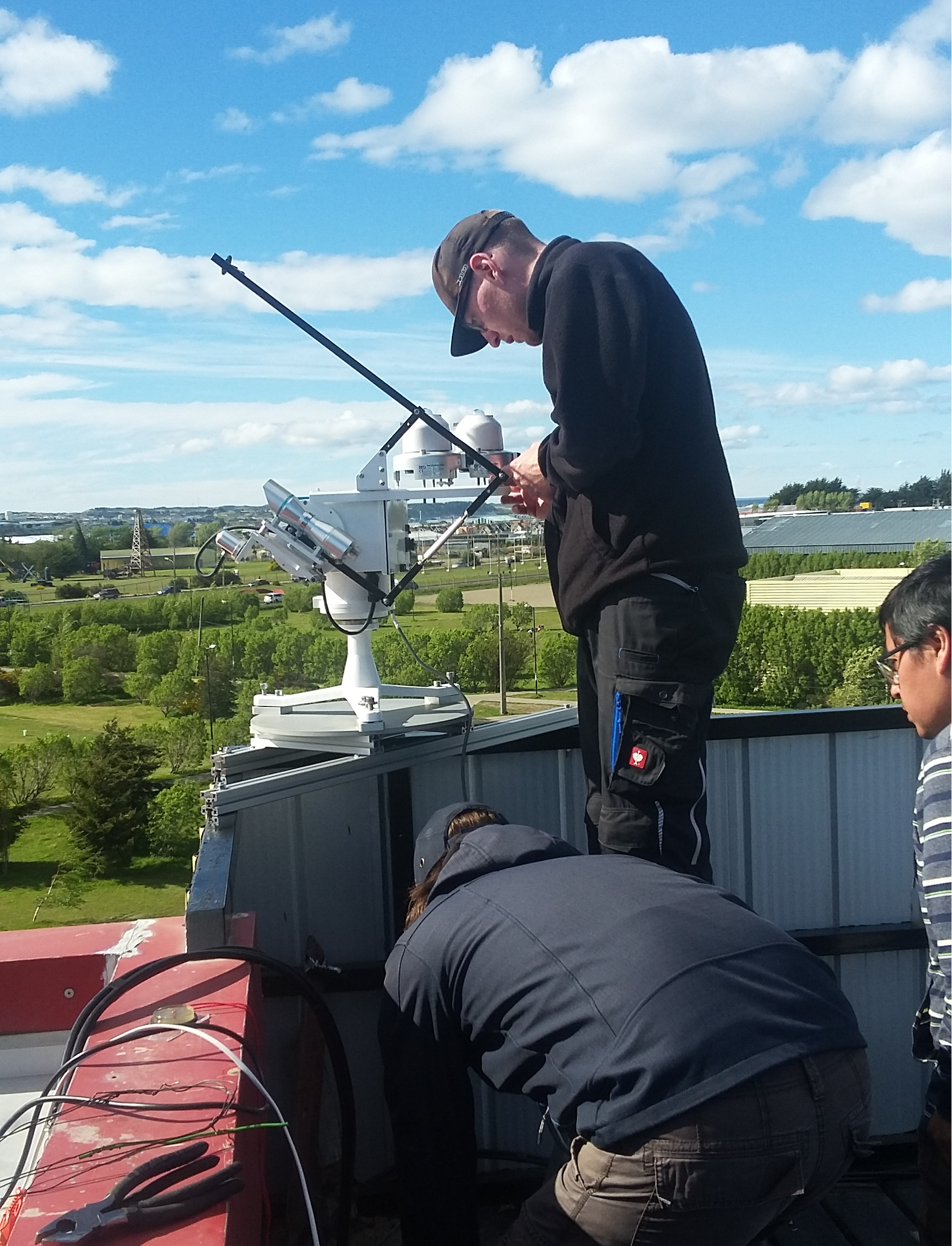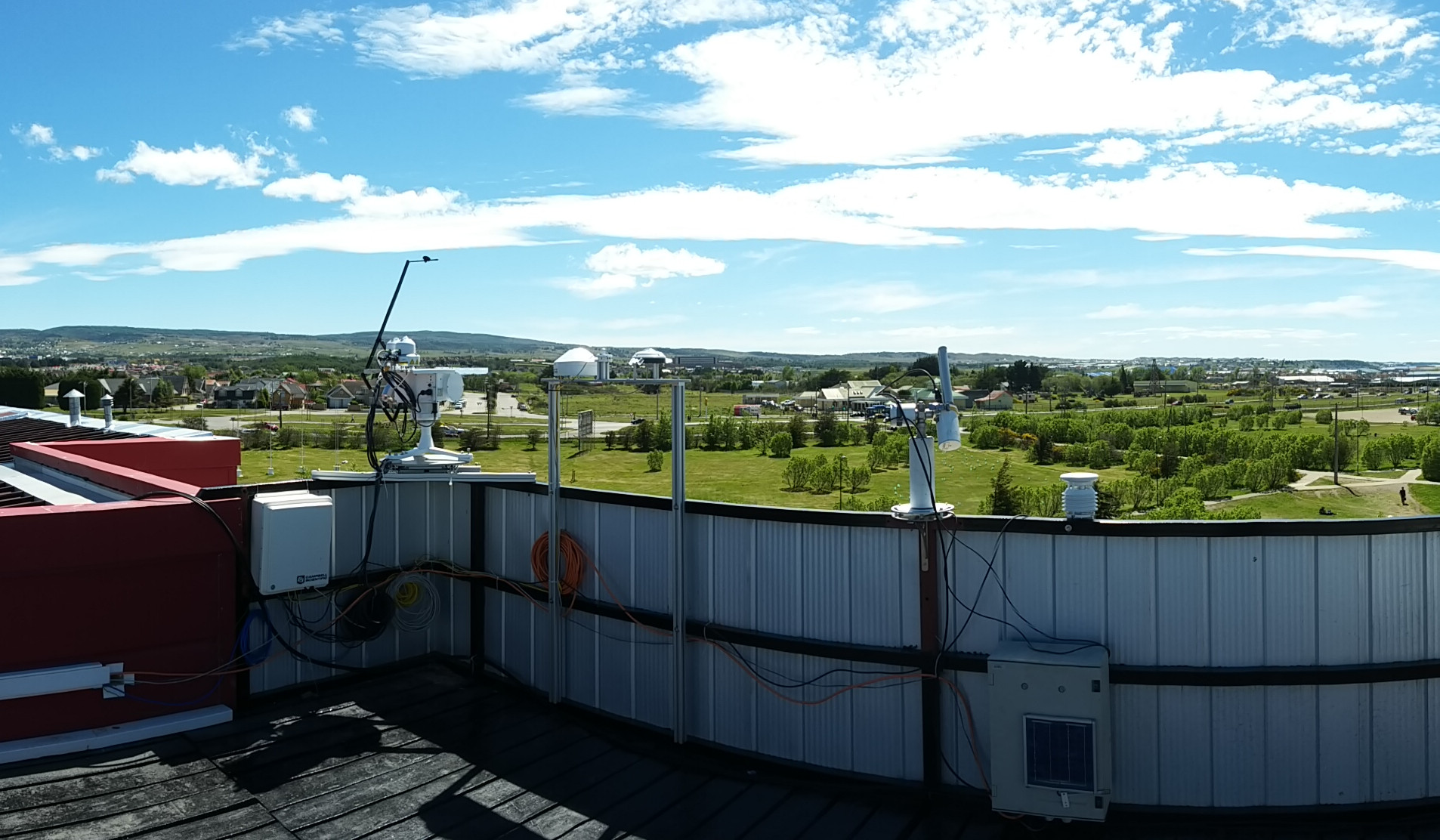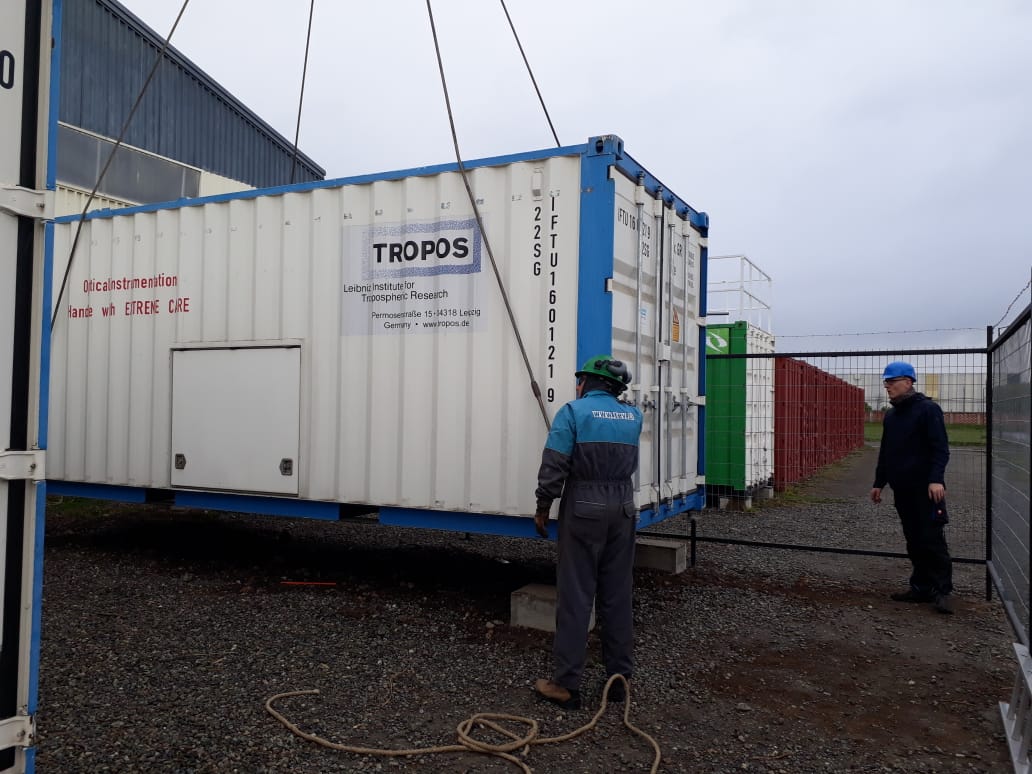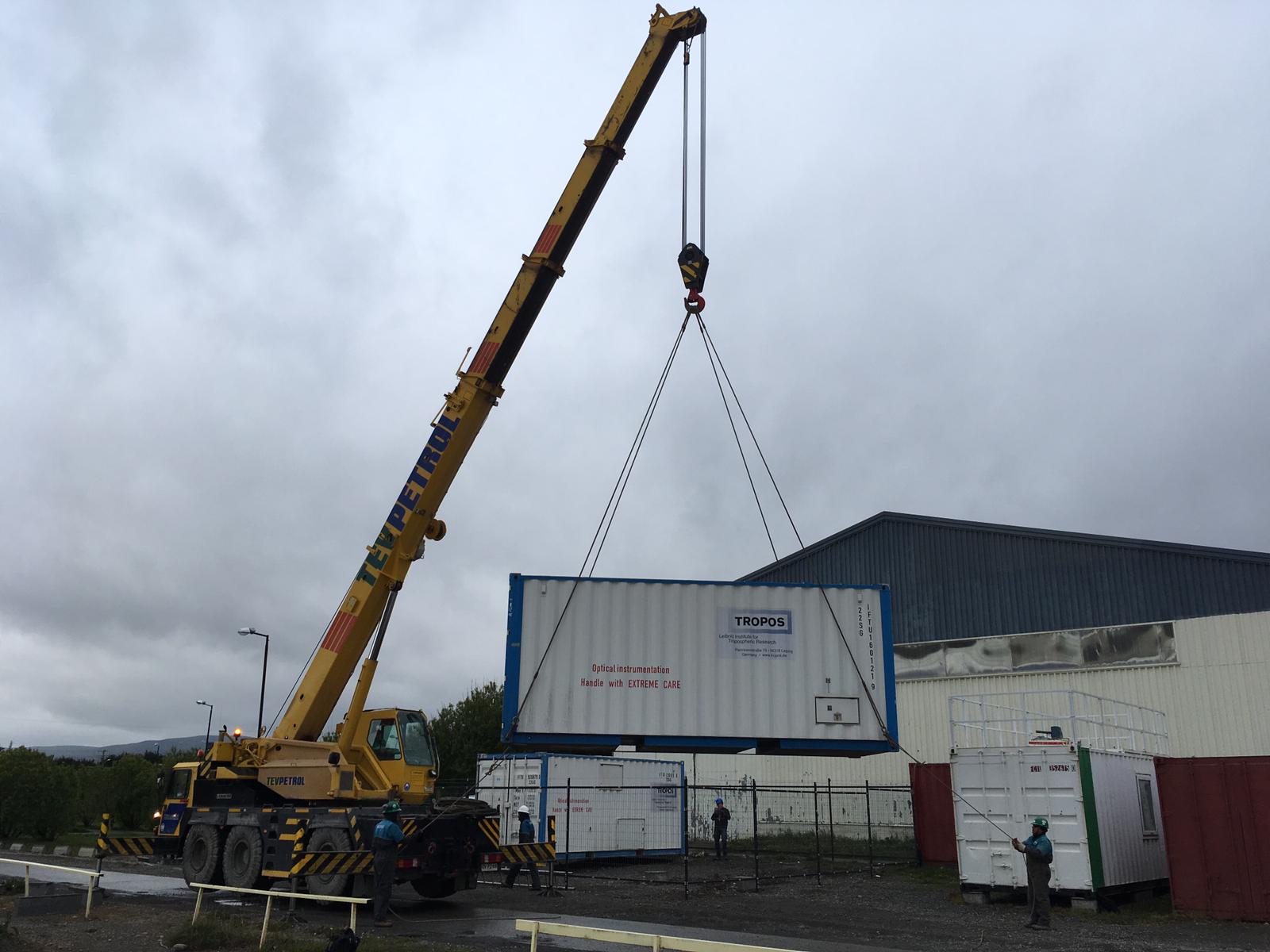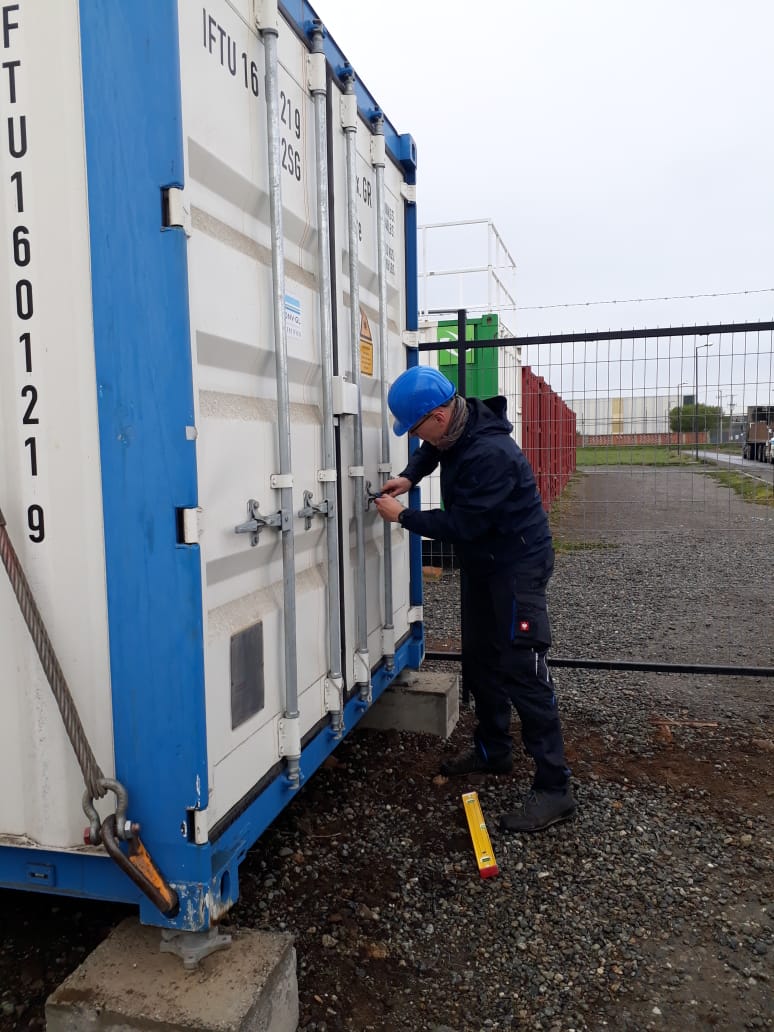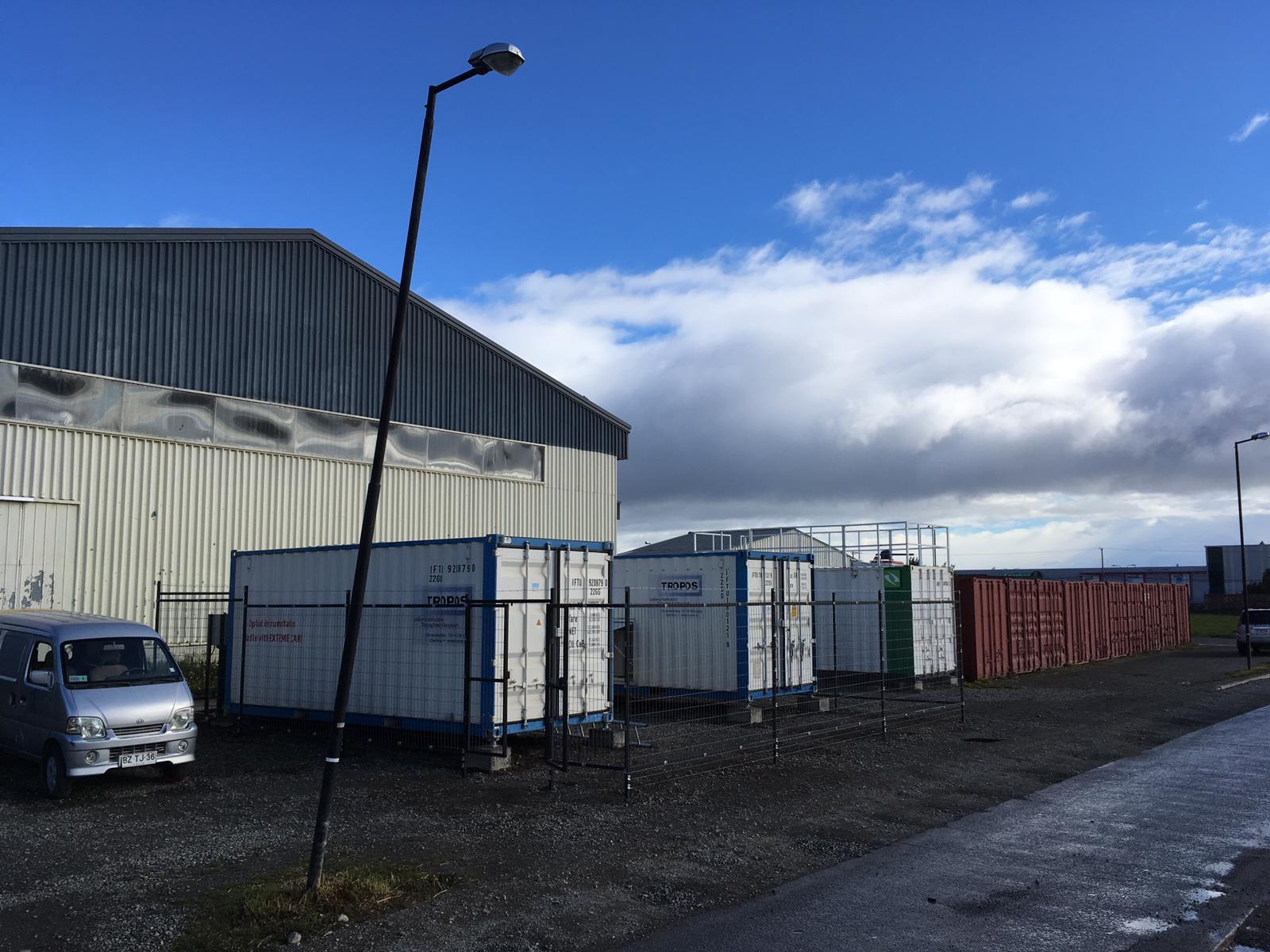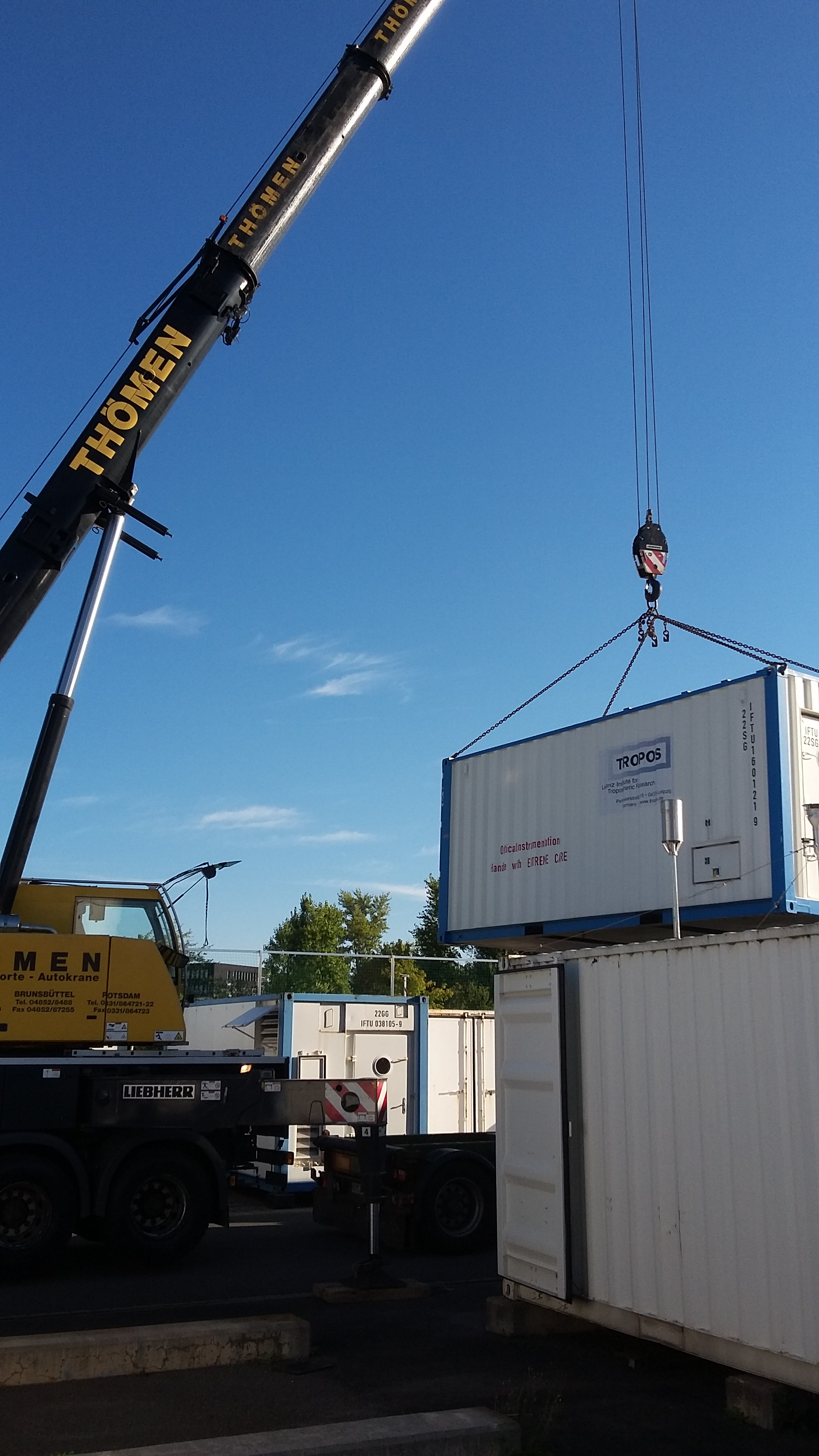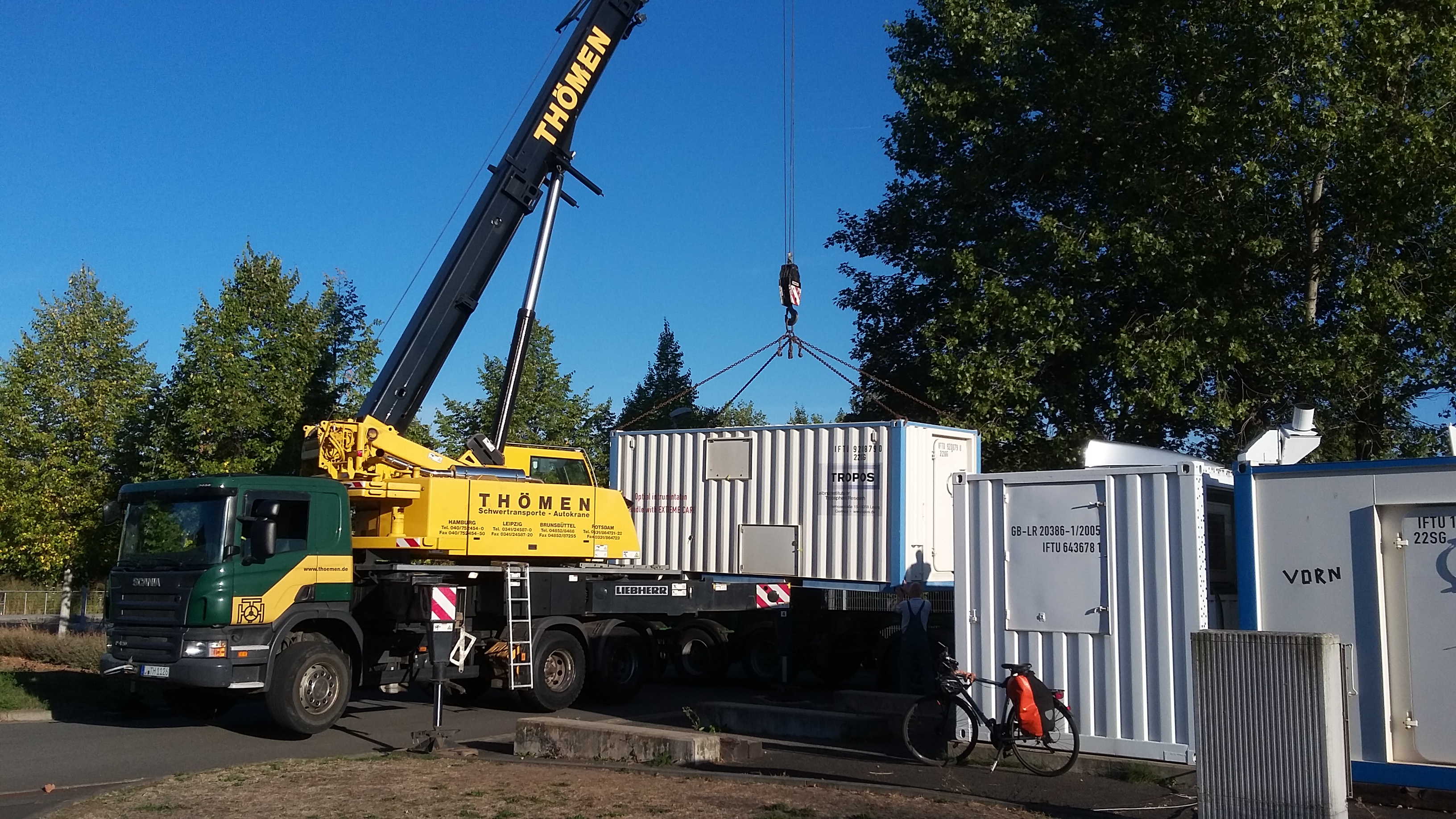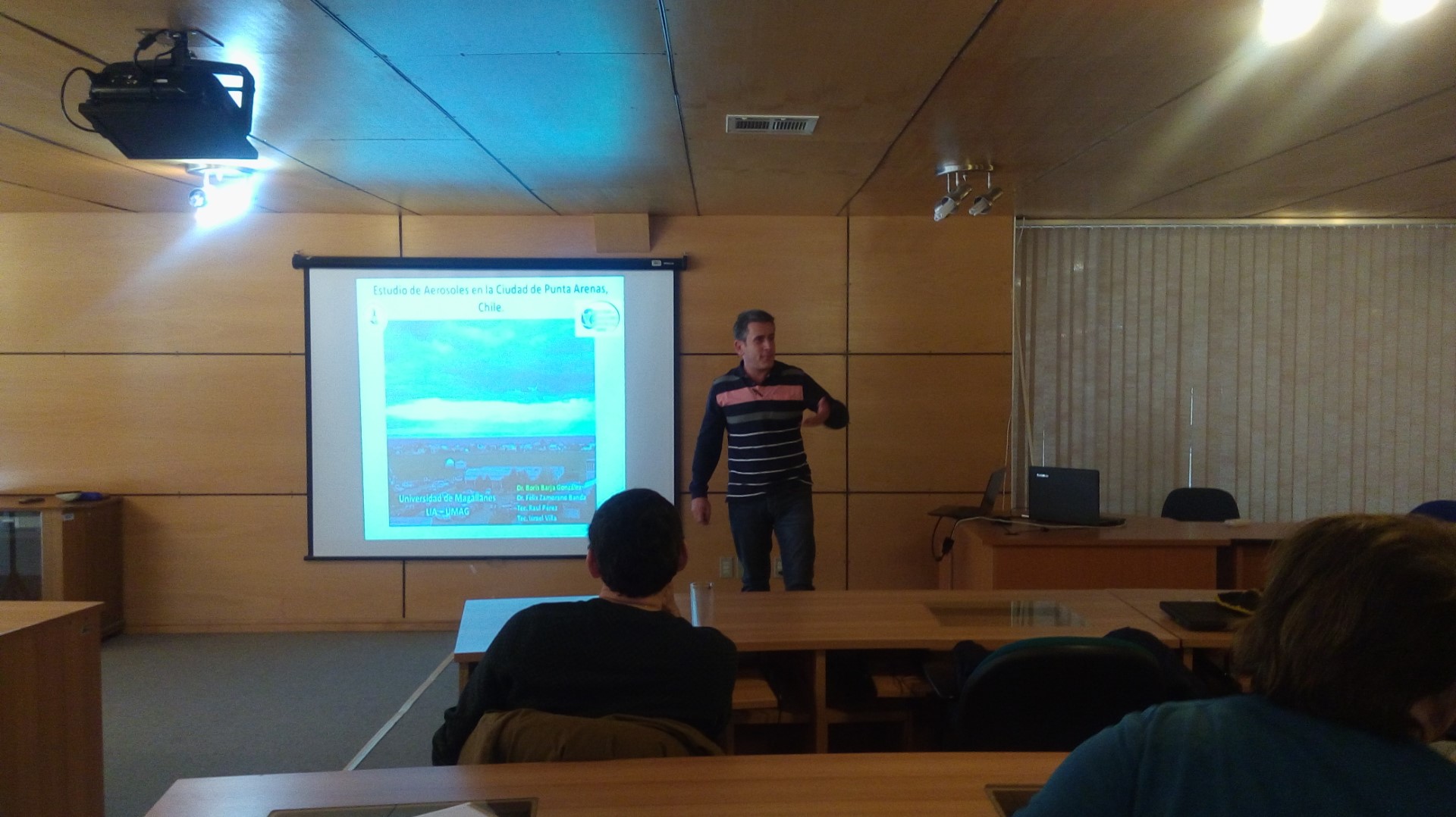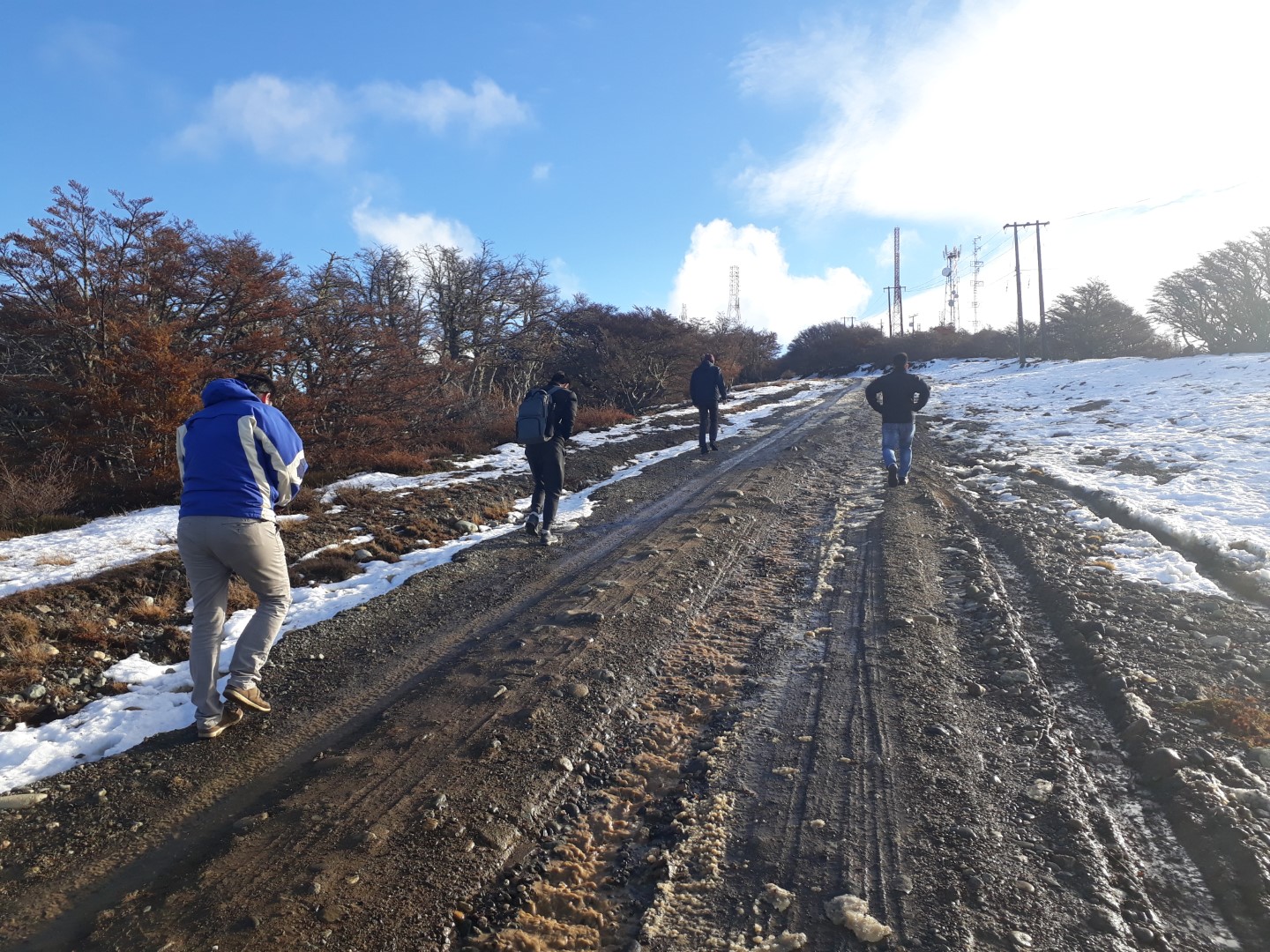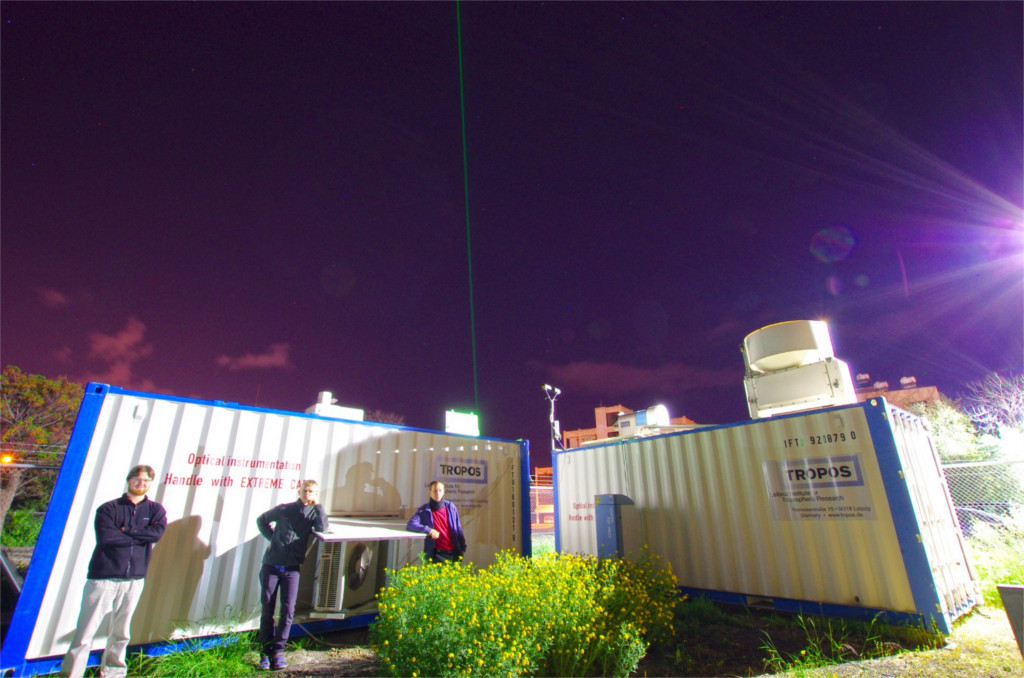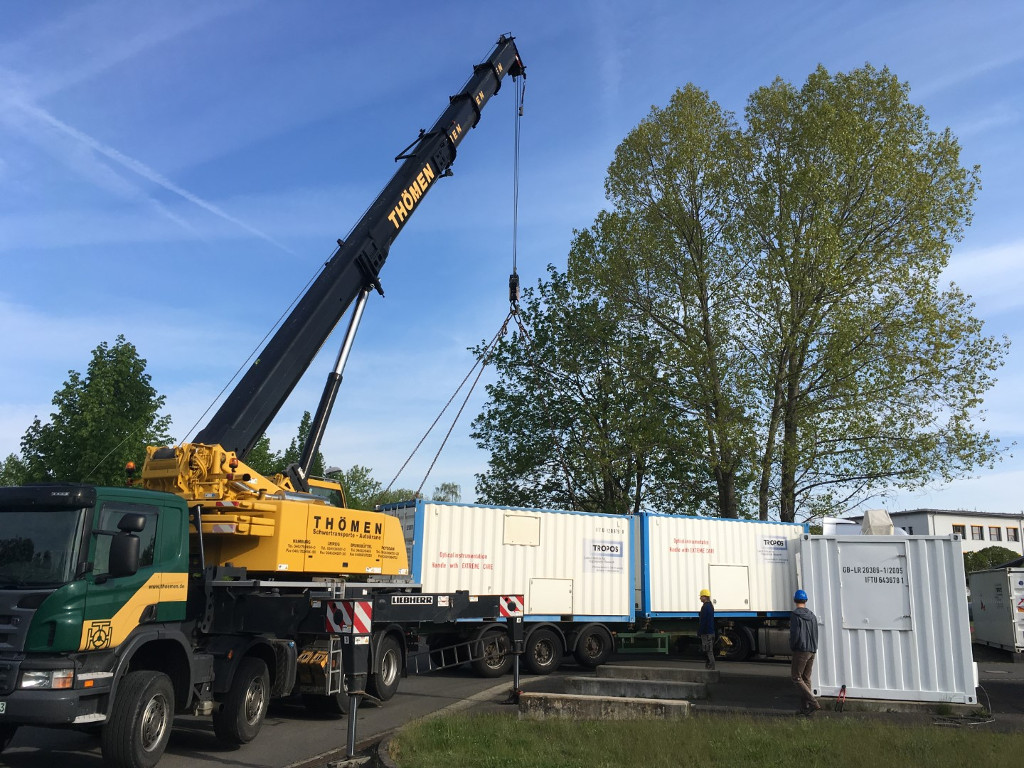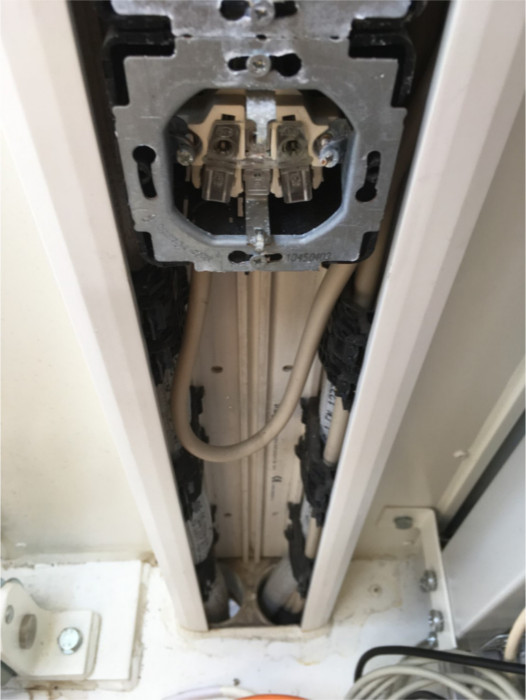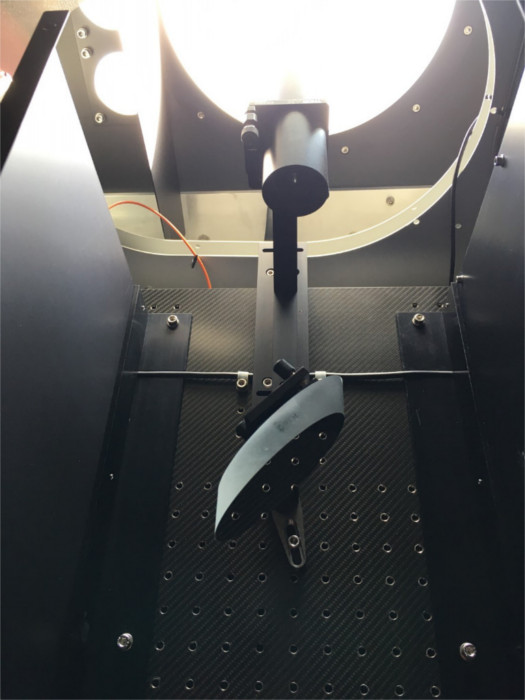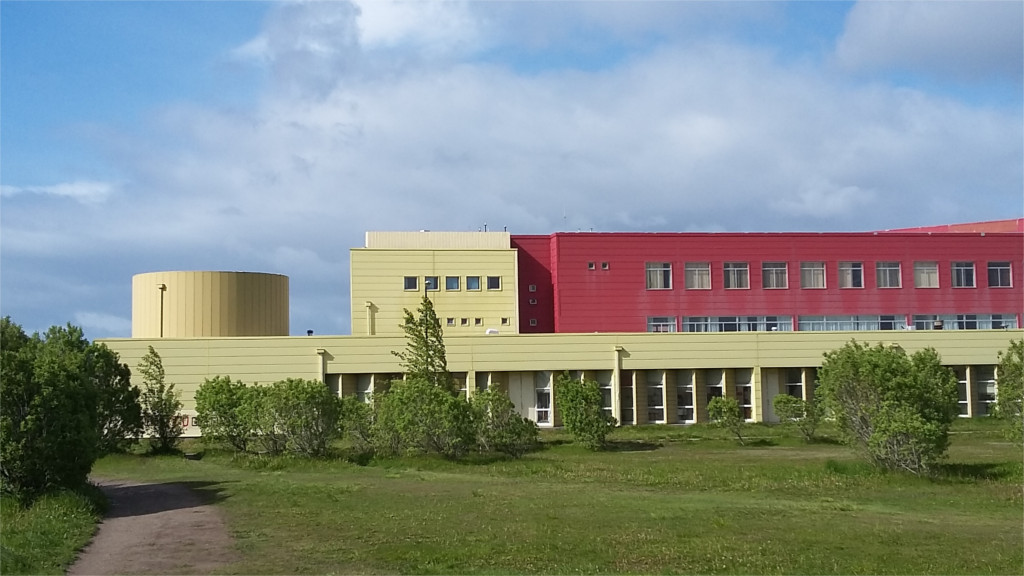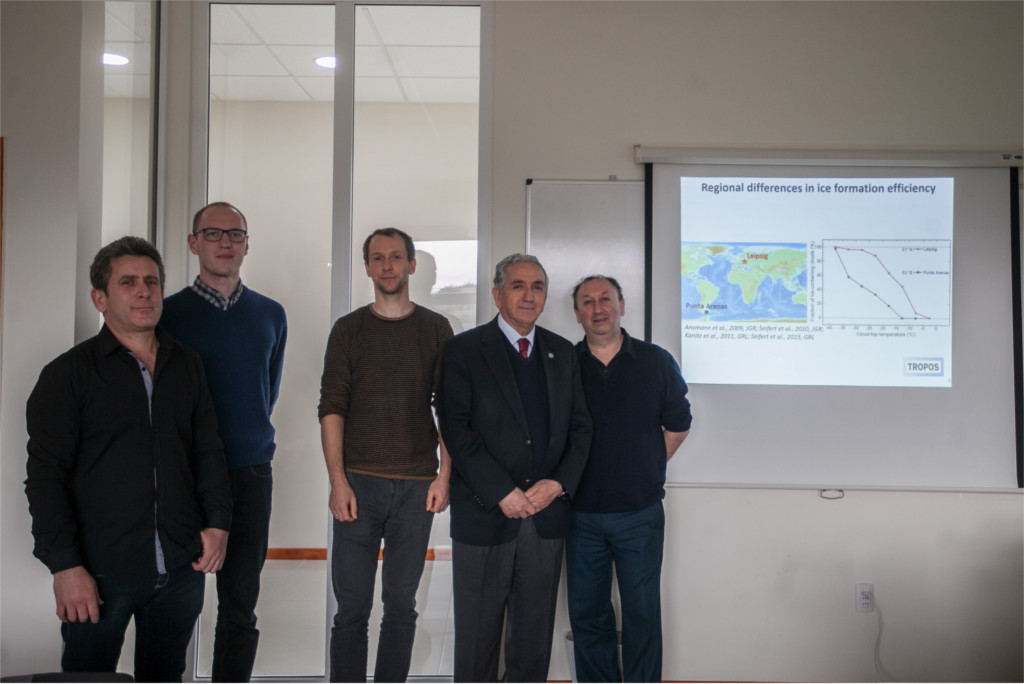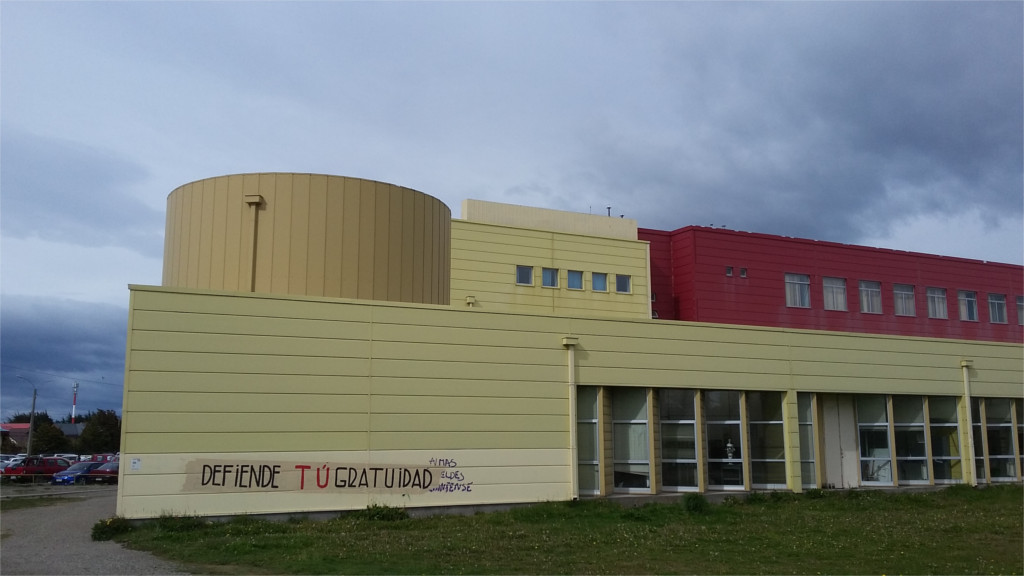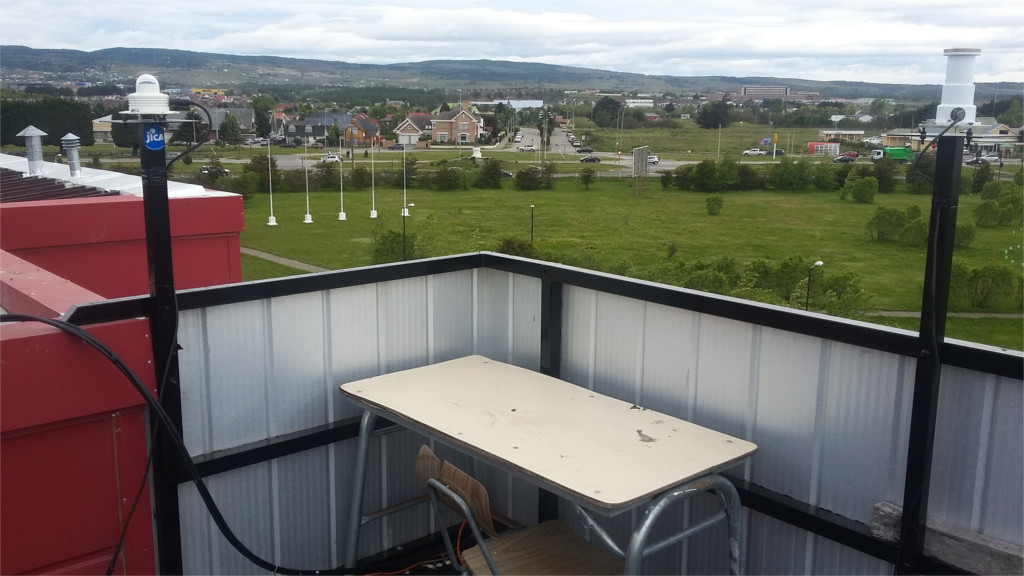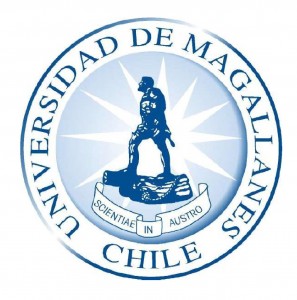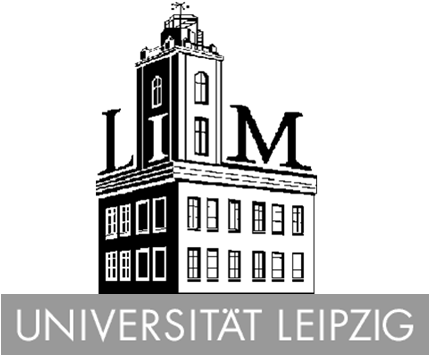During the last week - 26 to 30 November - we set up the instruments of LACROS. Together with our colleagues of the Laboratorio de Investigaciones Atmosféricas (LIA) at the Universidad de Magallanes we had a couple of busy days. The ‘hardware’ work, like moving boxes, fixing and levelling the instruments in the right places, installing cables, etc., took the first half of the week. Furthermore, we had to dig a water and windproof cable trench between the containers and repair some smaller transport damages.
Additionally to the container site, we deployed some radiation measuring equipment on the rooftop platform of the LIA. This installation required a little bit of tinkering, as we had to adapt to the local conditions. Luckily, the weather was quite nice during this period. Mostly sunny with almost no wind and rain.
Having the ‘hardware’ part done, the second half of the week was devoted to software setup. The network had to be configured, internet access had to obtained, synchronization scripts need adjustment (or rewriting), the on-site data processing had to be set up and a lot more.
On Friday the 30 November 2018 Boris Barja organized a small inauguration event, to officially start the observation phase of DACAPO-PESO. On this occasion, representatives of the university and local media had the chance to visit the site and have a look at the instrumentation.
[mr; image credit: ps, mr]
The DACAPO-PESO deployment of LACROS is about to become serious. A one-person advance party already arrived at Punta Arenas last weekend. During the week, some logistics had to be prepared and coordinated with our colleagues of UMAG and some local companies.
On Friday, the 23 November, the two containers with the instruments finally arrived at UMAG, Punta Arenas. Two trucks, a crane and several slingers were at the site before 7 o’clock in the morning. Together with staff from TROPOS and UMAG, locating the containers on the prepared concrete bedplates went smoothly.
Following the first impression, the containers seemed to have survived the 2-month sea transport rather well. As a last task for this day, the electricity connection was installed and the air conditioning/heating was powered up.
The instruments will be set up and put to operation during next week, as soon as two more scientists from TROPOS arrive here. Let’s hope that nothing (too serious) broke during transport.
[mr; image credit: Boris Barja, mr]
During the first week of May, a second preparatory meeting took place at UMAG, Punta Arenas. This time a three-person team from TROPOS (Cristofer, Zhenping, Martin) came to Punta Arenas to advance the preparation of DACAPO-PESO.
Cloudy sky over Punta Arenas in late fall.
A one-day workshop together with representatives from UMAG and Dirección Meteorológica de Chile (Chilean Meteorological Service) was the most important appointment during the week. Well organized by our collaborator at UMAG, Boris Barja, several talks were given on current research topics and opportunities for further collaboration. After the presentations plenty of time remained for discussions and networking.
Boris giving a presentation during the Workshop.
The remaining days were filled with various tasks. Scouting a potential field site for undisturbed aerosol sampling meant hiking up Cerro Mirador – a 600 m hill hosting several telecommunication ground stations and Punta Arenas’ skiing resort. During late autumn with temperatures slightly above freezing and winds around 40 kt this trip was a little bit demanding, but most likely there will be the opportunity for in-situ sampling during DACAPO-PESO.
Hiking up to Cerro Mirador at temperatures around freezing level and approx. 40 kt winds.
We also visited the local office of the DMC at the airport of Punta Arenas and discussed joint measurements and the exchange of data. From this office, the DMC monitors the surface observation network in the Magallanes region, launches radiosondes daily and issues the aviation weather reports. Furthermore, a short meeting was held with a logistics company regarding the final delivery of the LACROS containers at Punta Arenas.
After a quite successful week, the return trip did not start at the airport, but at the port, where we boarded the German research vessel Polarstern. During the four-week cruise back to Bremerhaven, Germany we took care of the OCEANET container.
[mr]
In the morning of the 27 April, TROPOS’ LACROS facility returned to Leipzig after an 18-month deployment in Limassol, Cyprus. But the return to its home base should not last very long, because the DACAPO-PESO campaign is scheduled to start in November. The shipping of both containers had to start in September in order to arrive at Punta Arenas on time. This left only a short period for necessary maintenance and upgrades.
Final springtime shot of the CyCARE field site of LACROS in Limassol, Cyprus, just a few days before its transport back to Leipzig.
A nighttime impression of LACROS and some of its PI’s (from left: Johannes Bühl, Albert Ansmann, Patric Seifert.)
On 27 April 2018, both LACROS containers arrive back well from Cyprus.
Installing power and network plugs side-by-side with the cooling tubes of the A/C system was not a good idea of the container manufacturer. Humid air entered the cable channel from outside during CyCARE and caused condensation of water and corrosion of the plugs.
First point on the to-do list was a safety re-certification of both containers. This included an inspection of the electrical installation (with some surprises, see the photo), the hoist gear, the air conditions and the structural integrity of the container itself. Some minor points had to be fixed, but now again LACROS is certified to be a save working place and is allowed to be transported as intermodal freight.
The second and most complex point was to upgrade major parts of the IT. To cope with the large amount of data collected during DACAPO-PESO we got a new main server with a 100TB storage system and additionally two new PCs for data acquisition. After fitting the hardware parts into place, the software setup and migration of all data processing took quite a time.
We also extended LACROS with two more Radars. A 24GHz micro rain radar is included permanently and enhances the capabilities to observe intense rain. The FMCW 94GHz of the Leipzig Institute for Meteorology was added just for the Punta Arenas deployment. Its high frequency makes this radar the perfect tool for the observation of thin clouds.
In parallel, we upgraded several instruments. Our PollyXT Lidar got an additional telescope together with a new detector – in total its 13th channel. With the new dual field of view depolarization technique it will be possible to retrieve microphysical parameters of clouds, like droplet number and diameter. The Halo Photonics Streamline Doppler Lidar Shaun was upgraded by its manufacturer to improve sensitivity.
The new wide-field-of-view telescope for polarization observations installed right above the secondary mirror of the main telescope of PollyXT.
Now, all the preparations are finished and LACROS will start its journey to Punta Arenas on Monday 17th September to Hamburg by truck. There it will be loaded onto a container ship (more information here) which travels via the Panama Canal to San Antonio, Chile. In the largest port of Chile, the containers will be transferred to a smaller feeder ship (more information here) to Punta Arenas, where they (hopefully) will arrive until November.
[mr]
During the week from 20 - 24 November Martin Radenz and Patric Seifert finally got in personal contact with the DACAPO-PESO collaborative partner University of Magallanes (UMAG) in Punta Arenas. The schedule on the first two days was tight and filled with an introduction of our pdans to the Department for Atmospheric Research (LIA, http://www.umag.cl/ozono/).
University of Magallanes
Boris Barja-Gonzales was our hero of the week. He guided us through meetings with the University Administration, the financial department and, most important for the DACAPO site preparation, to the staff responsible for the infrastructure of the campus of UMAG.
On Tuesday, 21 November, we received the signed Memorandum of Understanding, which is the basis for the scientific collaboration between TROPOS and UMAG. This event was accompanied by the presentation of primary information about the goals and scientific motivation for DACAPO-PESO. The director and vice director of UMAG as well as the PIs of the local PhD programs took part at this event. (http://www.umag.cl/vcm/?p=27158#textos)
Photo of Martin and Patric with the UMAG administration. Credit: UMAG (http://www.umag.cl/vcm/?p=27158#textos)
Martin and Patric collected numerous impressions about the meteorological conditions at this southern tip of South America. Steady winds and strongly variable cloud conditions are omnipresent in this region. There will definitely be plenty of atmospheric scenarios be observed by the LACROS instruments.
Concerning the deployment of the LACROS instruments we found well suited options for both the two containers as well as for the radiation sensors. LIA has a perfectly located roof platform that provided plenty of space and 360° open view for radiation sensors. The containers will be installed next to a gym that will provide a bit of wind protection.
Page 4 of 4



